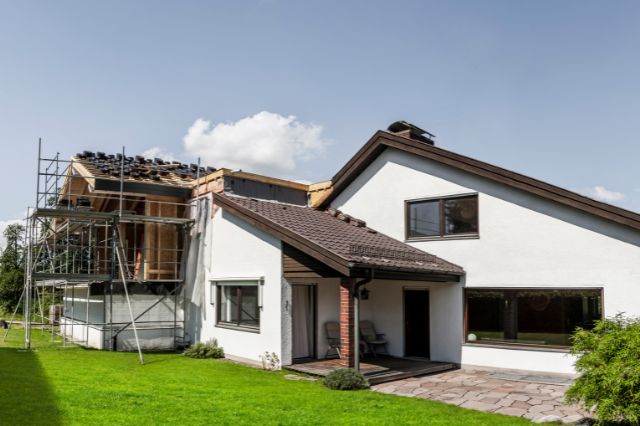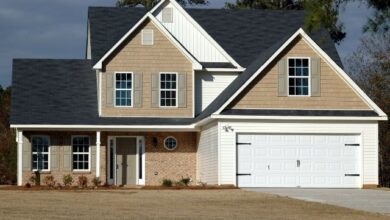What are Some Common Mistakes to Avoid During a Home Extension Project?

Planning a home extension can be an exciting time, as it is an opportunity to create more space and enhance the functionality of your living area. However, mistakes during the process can prove costly and may result in a structure that doesn’t meet your requirements.
To ensure that your home extension project runs smoothly, it is vital to avoid some common mistakes. Collaborating with a professional extension builder such as Bayside Extensions can assist you in managing the project. But first, let’s discuss some of the most common mistakes to avoid during a home extension project.
Inadequate Planning
Without proper planning, you risk overspending, encountering delays, and even having to redo work because of design flaws or functionality issues. A well-thought-out plan should include your goals, budget, design requirements, and consultations with professionals such as architects, builders, and contractors.
Inadequate planning can also result in poor functionality and aesthetics that do not meet your needs or preferences. This can lead to dissatisfaction with the final product and even decreased property value. By investing time and resources into planning, homeowners can ensure a successful home extension project that meets their goals, budget, and design requirements.
Poor Communication
Clear communication is essential throughout the project to avoid potential mistakes and misunderstandings that may arise between the contractor and the homeowners. Poor communication can lead to the project exceeding budget, delays, and unsatisfactory results. Blurred details, misinterpretations, or unmet expectations may cause additional expenses or result in redoing the work. Communication gaps may also make the project manager or contractor feel confused, uncertain, or frustrated.
Thus, it is crucial to establish clear lines of communication from the start of the project and review them regularly to ensure everyone is informed about the progress, changes, and decisions. Communication channels may include email, phone calls, meetings, or site visits. By prioritizing open communication and proactive engagement, homeowners and contractors can ensure a seamless project that meets their expectations and enhances the value of their homes.
Overlooking the Impact on the Existing Structure
As the extension is added, the weight and load on the existing foundation and walls change, potentially causing settling or structural damage. It is crucial to carefully assess the impact of the proposed extension on the existing structure beforehand. This assessment should include consideration of the foundation, walls, roof, and any potential damage to plumbing or electrical systems.
It should be implemented before the extension work begins if reinforcement or support is required. A professional contractor or engineer evaluation can help identify potential issues and guide the extension design and construction. By avoiding this mistake, homeowners can ensure the safety and long-term durability of their home extension projects.
Poor Design Choices
Poor design choices can hinder the success of a home extension project. It is imperative to consider the existing architecture and the purpose of the extension to ensure that a harmonious and practical living area is created. Ignoring the importance of natural lighting, ventilation, and space flow can result in a dull, stuffy, and cramped environment.
Carelessly adding extra rooms without assessing their functionality can impede the circulation of air and natural light, leading to increased energy bills and a gloomy atmosphere. It’s also important to select appropriate materials and colors that complement the home’s architecture and avoid clashing with the surrounding environment. A poorly designed extension will not only detract from the aesthetics of your home but also decrease its resale value. Therefore, it is crucial to make informed design choices to enhance your home’s livability and value.
Sacrificing Quality for Cost
While it may seem like a practical approach, the consequences of such a compromise can be detrimental in the long run. Lower-priced materials may save money upfront, but they are far more susceptible to wear and tear, requiring frequent repairs that can add up quickly. Hiring an inexperienced and unskilled workforce may seem like a bargain, but shoddy workmanship can lead to multiple issues.
In contrast, utilizing quality materials and hiring skilled professionals may be more expensive initially, but it guarantees a durable and long-lasting result that saves on future maintenance costs. Quality materials also contribute to the overall aesthetics and value of the property in the long term. In conclusion, it’s better to avoid sacrificing quality for the cost to ensure the best outcome of a home extension project.
Undertaking a home extension project is no easy feat, and as much as attention is paid to the plans, budget, and timeline, it can be tempting to let some important details slip through the cracks. Unfortunately, these mistakes can become costly and time-consuming, making the project a nightmare instead of a dream come true. However, taking a proactive and thoughtful approach to planning and executing the project can help ensure your extension is a success rather than a source of frustration.





